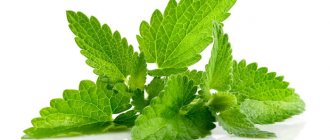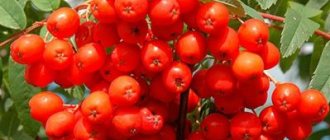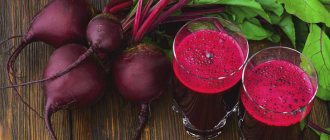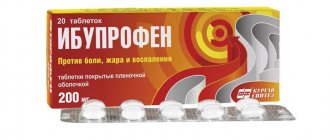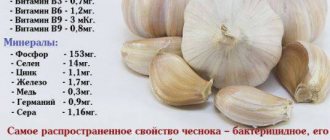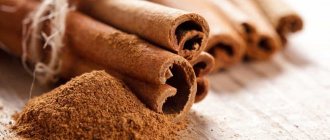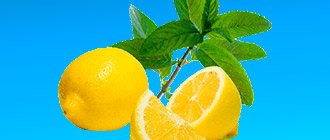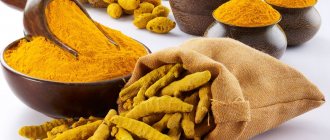Let's figure out how buckwheat acts on the human cardiovascular system: does it raise blood pressure or lower it, who will benefit from it?
Buckwheat is a source of oxalic, malic, citric, and folic acids; it is a hypoallergenic product and has numerous medicinal properties. Buckwheat is used in alternative medicine to treat various diseases.
How does buckwheat affect blood pressure?
Buckwheat is one of the products that have a beneficial effect on overall health, the functions and condition of individual organs and systems. Nature has generously endowed the cereal with vitamins, minerals, amino acids and other substances valuable to humans, so regular consumption of buckwheat porridge supports the vital systems of the body.
One of the most important effects of cereals is the normalization of blood pressure , normalizing the functions of the heart and blood vessels. Buckwheat helps lower blood pressure. It has a diuretic effect - it removes sodium, chlorine, magnesium in proportion to the increase in urine volume, and reduces the osmotic pressure of intracellular fluid.
For reference. There is a lot of information that buckwheat raises blood pressure. This assertion is unfounded. This may be an isolated case, and most likely, the increase in blood pressure is associated with the consumption of buckwheat in combination with other products that normalize low blood pressure.
Mechanism of action
The principle of the effect of buckwheat on high blood pressure is associated with the diuretic properties of biologically active components composition a. As mentioned above, they inhibit the reabsorption of water and salts in the kidney tubules, increase their excretion in the urine, and increase the rate of urine formation.
B vitamins together with ascorbic acid improve the condition of vascular walls and capillaries, increase their density and elasticity, and reduce permeability. Buckwheat contains many flavonoids, which have pronounced antioxidant properties and protect cells from damage by free radicals.
Buckwheat for hypertension is valued for the presence of vitamin E. It strengthens red blood cell membranes, supports metabolism in the heart muscle, improves blood clotting, normalizes blood circulation processes, reduces glucose and bad cholesterol levels.
By consuming buckwheat, you don’t have to worry about potassium deficiency in the body . This macroelement is responsible for muscle contraction and relaxation, which acts as a regulating factor in blood pressure. Its insufficient intake leads to a persistent increase in blood pressure, and the latter can cause heart failure, stroke, and liver disease.
The risk of developing hypertension is associated with limited intake of chromium and selenium into the body. Buckwheat is to some extent able to replenish the need for these micronutrients, which serves as a good prevention of cardiovascular pathologies, including arterial hypertension.
Another beneficial property of buckwheat, both for hypertensive patients and for absolutely healthy people, is its positive effect on the immune system. The complex of vitamins and minerals increases the body's resistance to infections and reduces the risk of developing diseases, which is especially valuable if you have bad habits.
Lack of physical activity and excess weight are one of the risk factors for developing hypertension. Buckwheat can be useful here too. Its obvious advantage is its low calorie content. During culinary processing, the caloric content of raw cereals is reduced by a third and after cooking it is only 101 kcal per 100 g. There are practically no fats in the grains, but they are rich in proteins and carbohydrates, which the body needs to be full.
Buckwheat porridge is nutritious, allows you to get enough of one small portion, which eliminates the need for additional snacks, and does not accumulate fat. Most macronutrients are absorbed by the body over a long period of time, saturating the human body with energy, while carbohydrates do not turn into new fat reserves.
Grains contain a lot of plant fiber, which cleanses the digestive tract well, removes excess fluid, waste and toxins from the body, normalizes metabolism, and improves digestion. Fiber also increases endurance and performance, stimulates physical activity, due to which more energy is consumed than is supplied with food; the body loses fat reserves, body weight decreases.
Fact. Experts have proven that every 10 kg of excess weight increases blood pressure by 10 mm. rt. Art.
Does dried apricot increase or decrease blood pressure?
The general list is quite extensive, and below are only the main products that lower blood pressure.
Beet
Vegetable juice is an excellent remedy for strengthening blood vessels. To make the most healthy drink possible, you can add other vegetables to beet juice, such as carrot juice. This drink strengthens the walls of blood vessels and also contains a lot of useful vitamins and microelements for the proper functioning of all body systems. In addition to juice, beets can be consumed in any other form: boiled, stewed, baked.
Garlic
Does garlic raise or lower blood pressure? In general, this product is unique. Everyone knows that it perfectly helps cope with viral and colds, but besides this, garlic is also a good remedy for reducing blood pressure. Garlic helps dilate blood vessels, thin the blood, and also prevents the formation of cholesterol plaques in the blood vessels. It is enough to eat just a couple of cloves a day.
Hibiscus tea
This drink is also very beneficial, especially for the cardiovascular system. Almost everyone knows that this tea perfectly quenches thirst even in the hottest weather. At the same time, the drink helps normalize blood pressure. Hibiscus dilates blood vessels, reduces their spasm, has a good effect on brain activity, etc. It is worth noting that in order to lower blood pressure, the drink should be drunk cold. Hot hibiscus is recommended for hypotensive patients as it increases blood pressure.
Raisins and dried apricots
These dried fruits are especially beneficial for the functioning of the heart, as they contain potassium and magnesium. Raisins and dried apricots prevent the formation of blood clots, thin the blood, reducing its viscosity, give elasticity to the walls of blood vessels, strengthen the heart, etc. It is recommended to consume about 200 grams per day. raisins to normalize the functioning of the heart and blood vessels.
Chokeberry
For hypertension, it is often recommended to use it in the form of a decoction. Rowan improves the condition of blood vessels, making them more elastic and elastic, reduces the amount of cholesterol in the blood, etc. To prepare the decoction, you need to pour 20 grams of fruits with a glass (200 ml) of boiling water and let it brew for about 10-15 minutes. Take half a glass three times a day.
Kalina
Viburnum fruits are an excellent means of reducing high blood pressure. To prepare a decoction of viburnum, you need to take a tablespoon of its fruits, grind them with sugar and pour a glass of boiling water. After the broth has infused (after 25-20 minutes), you can drink it. For maximum effect, take a glass of viburnum decoction three times a day.
Black currant
The juice from its berries also works great against high blood pressure.
Cranberry
Another wonderful berry, the consumption of which also has a positive effect on stabilizing blood pressure. Cranberries, grated with sugar and with the addition of honey, are great for treating high blood pressure. It is both tasty and very healthy.
Among herbs, mint is a very good remedy for almost everything, including reducing blood pressure.
But these products that lower blood pressure must be present in the diet of a hypertensive patient:
- dairy and fermented milk products;
- vegetables, fruits and berries;
- It is best to take fish (boiled, stewed, smoked) that is not too fatty;
- nuts and seeds of all types;
- various cereals and legumes (buckwheat and oatmeal are especially useful);
- all kinds of greens (they are very healthy and serve as an excellent addition to any dishes);
- chocolate.
Now you know what foods reduce blood pressure. But it is important to remember that in addition to following dietary recommendations and taking medications, you need to try to remain calm. After all, stress is often the culprit of a sharp rise in blood pressure. And if a person lives in conditions of constant emotional stress, then it is quite difficult to stabilize blood pressure with the help of a certain diet.
The following can lower blood pressure: The high content of vitamins and microelements in dried fruits helps normalize blood pressure and restore the cardiovascular system.
Dried apricots promote normal blood circulation. Dried apricots dilate blood vessels, remove toxins from the body and restore blood flow. This helps hypertensive patients reduce blood pressure and improve their well-being. Raisins are much more beneficial in lowering blood pressure than fresh grapes. It has antibacterial properties, but is high in calories.
Today we’ll talk about the benefits of dried apricots for hypertension. Hypertensive patients are recommended to consume dried apricots along with drug treatment. It activates cholesterol metabolism, promotes dilation of blood vessels, prevents blood clots, and restores heart rhythm. Dried apricots act as a blood thinner.
The beneficial properties of dried apricots lie in its composition: it contains carotene (vitamin A), ascorbic acid (vitamin C), nicotinic acid (vitamin PP) and B vitamins (B1, B2, B5), minerals: potassium, calcium, magnesium, phosphorus, iron, copper, manganese, cobalt. From all of the above properties of this product, we can conclude that dried apricots lower blood pressure.
1) dried apricots, prunes and dill must be mixed in equal proportions, after 1 tbsp, pour 1 glass of boiling water, leave for 30 minutes, filter. And before each meal, take 1 tablespoon, but not more than 1 spoon per day, the course of treatment lasts until the glass of this medicine runs out. 2) Dried fruit compote will also be useful.
Useful properties and recipe for garlic for high blood pressure
Calendula tincture lowers blood pressure
How is apple cider vinegar beneficial for hypertension?
How does sugar affect blood pressure?
5 main reasons for high blood pressure
RELATED VIDEOS
Almost every person has heard about such a disease as hypertension - a chronic increase in blood pressure. There are a huge number of reasons for the development of arterial hypertension, ranging from problems with the cardiovascular system to diseases of the musculoskeletal system.
Previously, such a diagnosis was made mainly to older people due to age-related changes in the body. However, now the disease has become much younger. Hypertension has already become quite often diagnosed among people 30-35 years old.
Treatment of the disease is carried out in a complex, and an important stage is compliance with certain nutritional recommendations. And here it is important to know which products lower blood pressure?
Vegetable juice is an excellent remedy for strengthening blood vessels. To make the most healthy drink possible, you can add other vegetables to beet juice, such as carrot juice. This drink strengthens the walls of blood vessels and also contains a lot of useful vitamins and microelements for the proper functioning of all body systems. In addition to juice, beets can be consumed in any other form: boiled, stewed, baked.
Does garlic raise or lower blood pressure? In general, this product is unique. Everyone knows that it perfectly helps cope with viral and colds, but besides this, garlic is also a good remedy for reducing blood pressure. Garlic helps dilate blood vessels, thin the blood, and also prevents the formation of cholesterol plaques in the blood vessels. It is enough to eat just a couple of cloves a day.
Black currant
Another wonderful berry, the consumption of which also has a positive effect on stabilizing blood pressure. Cranberries, grated with sugar and with the addition of honey, are great for treating high blood pressure. It is both tasty and very healthy.
Among herbs, mint is a very good remedy for almost everything, including reducing blood pressure.
Now you know what foods reduce blood pressure. But it is important to remember that in addition to following dietary recommendations and taking medications, you need to try to remain calm. After all, stress is often the culprit of a sharp rise in blood pressure. And if a person lives in conditions of constant emotional stress, then it is quite difficult to stabilize blood pressure with the help of a certain diet.
Can it be used if you have hypertension?
Hypertensive patients are advised to include cereals in their daily diet, as buckwheat lowers blood pressure. With high blood pressure, it is extremely important to control the level of calcium, potassium, chlorine, selenium, magnesium, manganese, vitamins A, B, C and other components that ensure adequate heart function and have a beneficial effect on the condition of large and small vessels.
Thus, by systematically consuming buckwheat, you can maintain an acceptable level of blood pressure and prevent the development of possible complications. In addition, unlike medications, the product acts very gently and practically does not cause negative reactions in the body.
Recipes with buckwheat for hypertension
The beneficial properties of buckwheat depend on various factors: variety, grain quality, cooking method, combination with other products . Buckwheat goes on sale in four forms: core, chaff, Smolensk groats (small grains) and buckwheat flour. The most suitable kernel in terms of benefits for the body. This is a cereal made from whole, uncrushed grains, during the processing of which only the surface shell is removed, so all valuable substances remain in the composition.
Harm and contraindications
Despite all the beneficial properties of cereals, long-term and excessive consumption of buckwheat threatens to reduce the concentration of sodium and chlorine ions in the blood. A low concentration of chlorine in the blood is manifested by nausea, vomiting, weakness, muscle pain and cramps, thirst, dry mouth, and mood changes.
With a deficiency of sodium in the blood, fatigue, convulsions, increased excitability, and confusion are observed. If you have an individual intolerance to buckwheat, allergic manifestations are possible: rash, itching, redness and peeling of the skin.
Consumption of buckwheat in excessive quantities requires control over indicators of the state of water and electrolyte balance. At risk are patients with:
- pathologies of the cardiovascular system in the acute stage;
- disorders of the liver;
- diseases of the urinary system of severe course;
- slow metabolism;
- diabetes mellitus
It is necessary to completely exclude buckwheat from the diet if you are allergic to the product; limit its consumption if you have low blood pressure.
Dried apricots for blood pressure and hypertension: properties, recipes
Does dried apricot lower or increase blood pressure? What beneficial properties of dried apricot should you pay attention to? Why is dried apricot so highly valued for hypertension?
Dried fruits are an excellent option to saturate your body in winter with vitamins and beneficial microelements, which are well preserved in this product. Hypertensive patients will be interested to know the answer to the question of how dried apricots affect blood pressure?
We will analyze the benefits and harms of dried apricot below, find out its beneficial and medicinal properties, composition and contraindications for use. Do not forget that we are talking about a dietary product, so people who are overweight should pay attention to it.
The beneficial properties of dried apricot are explained by its rich composition, which is preserved for a long period of time.
The product contains vitamins (A, B1, B2, C, PP, E), pectin, fiber, mono- and disaccharides, organic acids, minerals (potassium, magnesium, calcium, phosphorus, sodium).
Such a rich composition helps to cope with many diseases when conventional medications no longer bring the expected effect.
The benefits of dried apricots are characterized by pectins, which remove radionuclides and heavy metal salts from the body, and cleanse them of toxins. It is recommended to eat dried apricots for anemia and ophthalmological problems. B vitamins can improve the functionality of the nervous system. Dried apricots have a low glycemic index, so they should be consumed if you have diabetes.
The product demonstrates a diuretic effect, reduces the negative effects of antibiotics, improves the condition of muscle tissue, skin and hair. Dried apricot also acts on the body as a rejuvenating agent.
Since dried fruit has a laxative effect, it cleanses the intestines, normalizing its peristalsis. The product has antiseptic properties, cleanses wounds of pus, and is able to act on the principle of Vishnevsky ointment. —> The benefits and harms of dried apricots vary from person to person.
It is recommended to eat no more than 100 grams of dried fruits per day. Otherwise, you may experience digestive disorders. Therefore, it is enough to eat no more than 5 dried apricots per day.
Damage to dried apricots can be observed if chemicals were used in its production, which will negatively affect the functioning of internal organs. It is contraindicated for low blood pressure (hypotension) and asthma.
Dried apricot is recommended for use in parallel drug treatment of arterial hypertension. The product increases the body's defenses, activates cholesterol metabolism, dilates blood vessels, reduces their spasm, prevents the formation of blood clots, and helps restore heart rhythm. Dried apricot also thins the blood and reduces its viscosity.
Thanks to the above beneficial and medicinal properties, dried apricots reduce blood pressure, so they are recommended to be included in the diet for hypertension.
It normalizes metabolic processes and helps cope with edema due to diseases of the cardiovascular system.
Since dried apricot is an effective natural remedy for high blood pressure, it is called a stabilizer for the proper functioning of blood vessels and the heart.
If you have high blood pressure, it is recommended to boil dried apricots. 100 ml of liquid should be mixed with 50 ml of mint leaves infusion and 20 ml of lemon juice. This remedy is taken 2 tbsp. twice a day. The course of treatment is 5 days.
For hypertension, dried apricots are mixed in equal proportions with dill seeds and prunes. 1 tbsp. the mixture needs to be poured with 250 ml of boiling water. Let it brew for half an hour, strain. Use 1 tbsp. before eating. Take no more than one spoon during the day. The course of treatment lasts until the tincture with dried apricots for high blood pressure runs out.
Take 100 grams of grated parsley roots, 2 tbsp. raisins and dried apricots. Pour the mixture into 400 ml of boiling water. The product is infused in a thermos for 4-5 hours. Take it 2 times a day, 100 ml. The course of treatment is a week.
For hypertension, dried fruit compote will be useful. For 100 grams of ingredients, use 1 liter of water. They are washed, filled with water and put on fire. After boiling, the pan needs to be moved to a warm place for 3-5 hours so that the compote can brew. This method of preparation will preserve most of the beneficial properties and vitamins.
Reviews from site readers and experienced hypertensive patients confirm the fact that dried apricots lower blood pressure, but do not raise it. Apricots also have similar properties. The hypotensive effect of the product lies in its rich composition.
Dried apricots and blood pressure are interrelated concepts that should be paid attention to in case of hypertension.
It is not surprising that traditional medicine strongly recommends diversifying your diet with both fresh and dried apricots.
Loading…
Source: https://beauty-love.ru/zdorove/gipertoniya/kuraga-pri-davlenii-i-gipertonii-svoystva-retseptyi
Doctors' opinions
Hypertension is a serious disease . When it lasts for a long time, chronic damage to blood vessels, liver, kidneys, heart, and organs of vision develops. It is impossible to completely cure the disease, but it is possible to prevent further development and reduce the frequency of crises. One of these methods is nutrition correction.
You can avoid increasing blood pressure by taking special foods containing dietary fiber, polyunsaturated fatty acids and vegetable protein. All these and other substances valuable for the human body are found in buckwheat.
Cardiologists advise including buckwheat in your daily menu as a good means of preventing high blood pressure. But this does not mean that the problem of high blood pressure is solved. To achieve stable remission, it is not enough to just constantly eat buckwheat.
An integrated approach is required, the use of medications, and products that lower blood pressure, including buckwheat, are only part of the treatment.
Useful properties of buckwheat
Giving an answer to the question - does buckwheat increase blood pressure or lower it - doctors and nutritionists unanimously claim that this cereal helps normalize its level, lowering the tonometer readings. Hypertension and buckwheat porridge are two interrelated concepts in a therapeutic diet.
In addition to the fact that buckwheat lowers blood pressure and prevents the risk of stroke and heart attack, it also has other beneficial properties.
Buckwheat porridge is indicated not only for lowering blood pressure, but also for all overweight patients and diabetics. Due to its high carbohydrate content, it nourishes and gives a feeling of fullness, but is not stored in the body as fat deposits.
This cereal also has a positive effect on the cardiovascular system - it acts as an excellent preventative against the formation of blood clots and strengthens the walls of blood vessels, reducing their fragility and improving blood flow. It also helps normalize the functioning of the liver and heart, removes toxins and sugar, bad cholesterol from the body, increases hemoglobin levels, strengthening the immune system. In addition, it normalizes the functioning of the gastrointestinal tract and promotes normal digestion, which is why it is often prescribed for diseases of the stomach and esophagus, pancreas and jaundice, in case of frequent attacks of heartburn.
Buckwheat porridge contains a whole complex of vitamins and beneficial microelements
It is possible to reduce blood pressure with buckwheat porridge and improve the functioning of the whole body - all this is achieved due to the following composition of this cereal. So 100 grams of this product contains:
- Proteins – 10-13 grams.
- Fats – 1.7 grams.
- Carbohydrates – 70 grams, fiber – 3-4 grams.
- Vitamins B and E, PP and rutin.
- Phosphorus and calcium, potassium and magnesium, zinc and copper, iodine, iron.
Buckwheat also contains amino acids such as lysine and arginine, methionine, threonine and acids - malic, citric, and oxalic.
Among other things, the advantage of buckwheat is that it helps prevent constipation and the development of cancer, due to its high calcium content - it strengthens bones and hair. Iron - normalizes the process of hematopoiesis, potassium lowers blood pressure, magnesium - helps overcome depression.
Composition of dried apricots
Dried apricots have a number of beneficial properties. In addition, due to the higher concentration of potassium salts compared to sodium salts, it is classified as a dietary product. However, it is rarely used for weight loss. This is a "heavy" product. The calorie content of 100 grams of dried fruit is 241 kcal.
The product contains (per 100 grams of product):
- Water: 301 grams;
- Proteins: 3.4 g;
- Fats: 0.5 g;
- Carbohydrates: 62.6 g;
- Fiber (dietary fiber): 7.3 g;
- Organic acids: 1.5 g;
- Ash: 4 g;
- Vitamins: Beta-carotene (A): 3.5 mg,
- Thiamine (B1): 0.015 mg,
- Riboflavin (B2): 0.074 mg,
- Niacin (B3 or PP): 2.6 mg,
- Choline (B4) - 13.9 mg,
- Pantothenic acid (B5): 0.52 mg,
- Pyridoxine (B6): 0.14 mg,
- Folic acid (B9): 10 mcg,
- Ascorbic acid (C): 1 mg,
- Tocopherol (E): 4.3 mg,
- Phylloquinone (K): 3.1 mcg;
- Potassium: 1160 mg,
- Iron: 2.7 mg,
Buckwheat and blood pressure
The components that make up buckwheat help normalize and lower blood pressure levels. In addition, B vitamins have a beneficial effect on the heart and help strengthen the walls of blood vessels and arteries, reducing and removing the level of bad cholesterol.
Also, magnesium and manganese, phosphorus and iron, which are part of buckwheat porridge, help relax the walls of blood vessels, saturate the blood with sufficient oxygen and naturally remove triglycerides, thereby acting as an excellent prevention of the formation of blood clots and blockage of blood vessels. Folic acid – improves the functioning of the cardiovascular system.
In their combination, all these components help to normalize and lower blood pressure, since buckwheat is a natural medicine that does not contain chemicals or GMOs.
Buckwheat contains a lot of protein, so it can partially replace meat
What fruits increase blood pressure
Cranberry
People with low blood pressure benefit from fruits and dried fruits rich in vitamins B, A, E, C, potassium, iodine, zinc, iron and strong. Such substances contribute to increased blood pressure.
Normalization of tonometer numbers is achieved due to the following properties:
Fruits and dried fruits help increase blood pressure if the cause of hypotension is fatigue, stress, physical and mental exhaustion.
The following products can stabilize blood pressure:
- pears;
- dates;
- lemon;
- grape;
- bananas;
- pomegranate;
- raisin;
- dried apricots.
Eating such fruits is especially beneficial for pregnant women and children. As you know, such persons are contraindicated in taking many medications, coffee and strong tea.
Positive changes in health can only be felt by a hypotensive person with daily and long-term consumption of certain fresh and dry fruits.
This fruit is rich in phosphorus, copper, and iron. It also contains organic acids, glutathione.
All of these substances have the ability to increase blood pressure. Pears have a diuretic, disinfectant, anticarcinogenic, and antioxidant effect on the body.
This product is high in calories and gives you strength. It is necessary to choose very ripe fruits. Pears can be eaten fresh and various salads can be prepared from them.
Dates
Dates contain many useful vitamins, minerals, and amino acids. They prevent the development of thrombosis and remove excess cholesterol from the body.
Regular consumption of dates has a positive effect on blood vessels, strengthening their walls.
A beneficial effect is also observed on the heart: the product helps prevent the development of various diseases of this organ. To normalize blood pressure, it is enough to eat a handful of dates every day.
Lemon contains a large amount of vitamin C. Citrus strengthens the immune system, improves the condition of blood vessels, and the functioning of the heart muscle.
The product is considered a natural antiseptic. It is usually used to prevent various viral diseases.
And, as is known, such pathologies can lead to hypotension. Lemon can be added to tea and salads.
Grape
Grapes have a high glucose content. This substance gives strength and increases the tonometer numbers. It also contains potassium, which is good for the heart and blood vessels. The fruits of the cultivated plant help improve blood composition.
Many hypotensive patients experience anemia. If you regularly consume grapes, your hemoglobin will increase. But this product is not recommended for people with impaired glucose absorption.
Pomegranate
The fruit is considered a powerful antioxidant. It is recommended by nutritionists and traditional healers to cleanse the body.
Pomegranate increases hemoglobin and, when consumed regularly, helps get rid of anemia. This fruit normalizes low blood pressure, improving the well-being of hypotensive patients.
The product can be consumed in the form of jam, juice or fresh.
Bananas
Bananas are quite high in calories, so they can give energy to hypotensive patients. They are rich in potassium, which improves the condition of the heart and arterioles. Bananas are also characterized by a disinfectant effect on the body. They do a good job of raising the tonometer numbers. They can be consumed fresh or dried.
Raisins mean dried grapes. Dried fruit has a more pronounced effect on the body than a fresh product.
This is due to the increased content of vitamins, minerals, and organic acids. Raisins are characterized by antioxidant and antibacterial properties.
To eliminate the symptoms of hypotension, it is enough to eat a small handful of dried fruits. But raisins can increase stomach acidity. Therefore, it is not recommended to use it for ulcerative pathologies of the intestines and stomach.
Dried apricots
Dried apricots are apricots that have been dried in a certain way. This dried fruit contains high concentrations of vitamins, amino acids, fiber, and minerals that nourish the body and eliminate the manifestations of hypotension.
Traditional healers suggest using dried apricots to prepare various tonics.
For example, a dried apricot minced with May honey works well to normalize blood pressure monitor numbers.
The advantage of using dried fruits to treat hypotension is that such products are available in stores all year round. You can also dry fresh apricots and grapes yourself. But for this you need to know certain rules and technology.
These products contain a lot of essential oils that stimulate the nervous system.
It is also recommended to include in the diet:
- cabbage;
- spinach;
- carrot;
- potato;
- artichoke;
- lettuce leaves.
They increase the concentration of hemoglobin in the blood and improve the well-being of hypotensive patients with anemia. It is especially beneficial to eat well-salted vegetables.
Pickles are especially useful for hypotensive patients
Sodium chloride retains water in the body and increases blood volume. This contributes to an increase in tonometer readings. Therefore, salted tomatoes, cucumbers, and sauerkraut will be useful for hypotension. But you shouldn’t overuse vegetables. Otherwise, digestive system upset may occur.
RELATED VIDEOS
How to use for hypertension
You can normalize your blood pressure by regularly introducing buckwheat dishes into your diet. Buckwheat helps not only reduce, but also maintain blood pressure at a certain level. In addition, buckwheat helps normalize weight, and therefore nutritionists prescribe an appropriate diet for overweight people for 2 weeks.
It is recommended to consume 1-1.5 cups of cereal per day - it is steamed with boiling water overnight and taken in small portions the next day. The main thing in this case is not to add salt to the porridge. It is best to combine buckwheat with kefir for hypertension.
- The classic recipe is kefir with buckwheat for blood pressure and weight loss. It is enough to pour 3 tablespoons of peeled and washed cereal into a glass of kefir, leave this mixture in the refrigerator overnight and have such a healthy breakfast in the morning.
- A fragrant recipe - kefir with buckwheat for pressure relief with the addition of honey and cinnamon. For a glass of kefir and 3 tbsp. l. add 2 tsp cereals honey and cinnamon on the tip of a knife. Mix everything thoroughly, leave for several hours and take it, divided into 2 doses.
It is useful to drink more water and green tea, and have dinner no earlier than 3 hours before bedtime. If you follow an appropriate diet for at least 3-4 weeks, your blood pressure levels will normalize, decreasing by an average of 11-12 mm. rt. Art. This diet also helps reduce the load on the heart and remove salts from the body, fluid in the body does not stagnate, and muscle fibers relax.
At the end of the treatment course, it is important to do a fasting day on a buckwheat diet once a week, and upon reaching 40 years old, it is recommended to eat it 5-7 times a week, since it contains rutin, which is an excellent prevention of cerebral hemorrhage.
Is hypotension dangerous?
A person suffering from hypotension often feels unwell, sleeps poorly, pain in the head during the day brings a lot of discomfort and makes it difficult to concentrate.
The cause of these phenomena is atony of the vascular walls. Blood circulates slowly throughout the body, which does not actively saturate all organs with oxygen and causes them to work slowly. At the same time, a person feels a loss of strength and cannot act actively.
Hypotension also has its advantages: a person with low blood pressure is less likely to suffer a stroke or suffer kidney and heart disease. People who are actively involved in sports, eat healthy and do not use tobacco products are often hypotensive. In itself, slightly reduced blood pressure is not dangerous to human health.
If the following symptoms appear on a regular basis, this indicates a vascular dysfunction:
- loss of consciousness;
- nausea;
- darkening of the eyes;
- severe headaches;
- ailment associated with dizziness.
After certain illnesses accompanied by vomiting, diarrhea and other loss of fluid in the body, a person’s blood pressure can drop significantly as the volume of circulating blood becomes smaller. Some medications also tend to lower blood pressure.
Useful properties of buckwheat
Due to the variety of beneficial substances in buckwheat, it is used to treat hypertension.
Buckwheat can rightfully be called the queen of all cereals. No other grain crop has such a variety of nutrients. Due to the rich content of minerals and vitamins, buckwheat can cope with almost any ailment. It is used for preparing dishes, healing drinks and nourishing cosmetics. Buckwheat has a lot of useful properties:
- Improves blood composition and digestive processes;
- Increases the body's resistance to viruses;
- Improves the functioning of the cardiovascular system;
- Increases the elasticity and endurance of blood vessels;
- Relieves heartburn and bloating;
- Reduces blood cholesterol levels;
- Removes excess fluids from the body.
Drinks that lower blood pressure
Hypertension is expressed as elevated blood pressure levels. During attacks, the patient notices an acute headache, dizziness, nausea, and black spots before the eyes. For hypertension, juice therapy can also be performed as an addition to the main drug treatment.
Tomato juice
Tomato juice can not only quench thirst, but also reduce blood pressure in hypertension. Many people prefer to drink this vegetable drink by adding a small amount of salt to it. But in the matter of impaired blood pressure, it is better to drink it in its pure form.
Among the beneficial properties of tomato juice, it is worth highlighting:
- Reducing high blood pressure;
- Stimulating the immune system;
- Strengthening the heart muscle;
- Reducing blood cholesterol levels;
- Reducing the risk of developing cardiovascular diseases;
- Elimination of flatulence and bloating.
If you have high blood pressure, you should drink at least 1 glass of tomato juice a day. And within a month you will be able to see noticeable results.
Beet juice
Pressure beet juice is a long-known effective method. It is excellent for patients suffering from hypertension. But unlike some other vegetables and fruits, which can be squeezed and drunk immediately, beet juice must be diluted. Otherwise, it can cause severe diarrhea, nausea and even vomiting.
Beetroot juice lowers blood pressure
In order to properly prepare the drink, you need to squeeze the juice from a fresh juicy fruit and add drinking water to it in a 1:1 volume. By drinking at least 1 glass a day, you can expect the following results:
- Reduced pressure levels;
- Cleansing the body of toxins;
- Stimulation of kidney function;
- Removing excess fluid;
- Improved brain function.
It is worth noting that beet juice is not recommended for people with increased stomach acidity.
Grapefruit juice
Grapefruit juice has a sweet and sour taste. Like any other citrus, this fruit has many beneficial properties. In addition to its antiviral effect, it is famous for:
- Increases the level of hemoglobin in the blood;
- Lowers glucose levels;
- Destroys cholesterol plaques;
- Reduces the risk of myocardial infarction;
- Reduces the risk of developing atherosclerosis.
Grapefruit is often mentioned in various diet programs. And all due to the fact that it is able to break down fats and speed up metabolism. In addition, the calorie content of the fruit is only 60-70 kcal.
Pomegranate juice
Pressurized pomegranate juice is also popular. Taking it helps reduce high values.
Additionally it is characterized by:
- Pronounced antioxidant effect;
- Diuretic effect;
- Blood purification property;
- Strengthening the walls of blood vessels and improving their conductivity.
If you have high blood pressure, pomegranate juice must be taken for a long time. In this case, it is best to dilute it with water in a 1:1 ratio.
It is worth remembering that pomegranate, like citrus fruits, has an increased risk of an allergic reaction, so before using it it is important to exclude this fact.
Apple juice
One of the most popular juices is apple. Not everyone knows that it can reduce high blood pressure. Especially suitable for this are varieties such as ranetki, Chinese pendant and scarlet filling.
Apple juice can increase stomach acidity, so if the patient already has problems in this area, it is better to dilute the drink with drinking water. You can also drink a mix of apple and carrots.
Chemical composition
The table shows only a small part of the useful components; in fact, there are many more.
| Vitamins | Macronutrients | Microelements | Carbohydrates | Fatty acid |
| A | Potassium | Iron | Starch | Omega3 |
| B1 | Sodium | Fluorine | Glucose | Omega6 |
| AT 2 | Magnesium | Iodine | Maltose | Linoleic |
| B6 | Calcium | Zinc | Dextrins | Oleic |
| B9 | Sulfur | Manganese | Sucrose | Palmitic |
| E | Silicon | Selenium | Fructose | Meristina |
| RR | Phosphorus | Cobalt | Lactose | Linolenic |
How does it affect blood pressure?
Components such as B vitamins, manganese, iron and phosphorus help lower blood pressure. It is these substances that help strengthen the walls of blood vessels, remove excess cholesterol and saturate the blood with oxygen.
In addition, the composition contains folic acid, which has a beneficial effect on heart tone, stimulates blood circulation and protects blood vessels from fragility. Buckwheat not only lowers blood pressure, it is able to normalize it and keep it in a normal state without allowing it to spike. With hypotension, croup does not raise blood pressure, so with low blood pressure, porridge will simply act as support for the body.
How to use for hypertension
To lower blood pressure, buckwheat must be consumed on an ongoing basis. A one-time dose, unfortunately, will not solve anything. In addition to the fact that buckwheat helps improve blood pressure, it also shows good results in the fight against excess weight.
Doctors recommend consuming buckwheat for two weeks. During the day you need to eat at least 20-25 tablespoons in several doses. It is better to consume buckwheat in case of high blood pressure in the morning, afternoon and evening.
In order for the cereal to retain the maximum amount of substances, it is recommended not to cook it, but to brew it with boiling water for 2-3 hours and then consume it. Good company for buckwheat porridge would be:
- Apples;
- Yogurt without additives;
- Low-fat fermented milk products;
- Dried fruit drinks.
Recipes for blood pressure
- Pour dried apricots, dates, raisins, prunes, walnuts, honey and cinnamon (150 grams each) with cold water for 30 minutes, then drain the liquid and scald with boiling water. If present, remove seeds from fruit. Pour into a blender, add 40 g. peeled nuts and grind until smooth. Pour into a storage container, add honey, cinnamon to taste and stir. Consume 2 times a day, 1 tbsp. spoon. Store in a cool place covered.
- Place equal amounts of dried apricots, raisins, prunes and nuts in a blender, add 3 lemons, previously cut and pitted, and grind thoroughly. Transfer to a jar, add 1 glass of honey. Eat 2 times a day, 1 tbsp. spoon. Store in a cool place.
- Dried fruit compote must be prepared quickly so that the components do not lose all their vitamins and beneficial properties. A mixture of fruits is used per 100 g. for 1 liter of water. Rinse dried fruits, add water and put on fire. After boiling, place the pan in a warm place overnight to let the compote steep. The composition should include raisins, dried apricots or prunes. You can add dried apples, strawberries, etc. to taste.
- Grind 2 tbsp. spoons of dried apricots and raisins, mix with 100 g of parsley root, grated on a coarse grater. Pour the contents into a thermos and pour 1.5 cups of boiling water. Strain after 3-5 hours. Drink 100 ml morning and evening for a week.
- Pour 60 g of figs into 1 liter of water and put on fire. After boiling, simmer for 12 minutes over low heat. Let it sit for an hour. Then strain. When using, add honey. Should be taken once a day before meals.
- Boil the dried apricot, add 20 ml of lemon juice and 50 ml of mint leaves infusion to 100 ml of the resulting liquid. Take 2 times a day, 2 tablespoons for 5 days.
- Mix dried apricots, prunes and dried dill in equal proportions. Pour boiling water over the mixture at the rate of 1 tablespoon per 250 ml of water. Strain after 15–30 minutes. Take 1 tablespoon once a day before meals. After the course of treatment, it is recommended to repeat the decoction after 3 weeks.
Doctors recommend that hypertensive patients do fasting days for the body and go on a dried fruit diet once every 7–10 days. It involves eating 0.5 kg of dried fruits per day 5-6 times. The products need to be crushed, steamed in boiling water, divided into equal parts and consumed throughout the day. Drinking tea is acceptable. However, such treatment is not advisable for people with diabetes: these products contain large amounts of sugar.
Healthy treats made from dried fruits are easy to prepare and the process takes little time, but they will help a person with high blood pressure:
- Pour dried apricots, dates, raisins, prunes, walnuts, honey and cinnamon (150 grams each) with cold water for 30 minutes, then drain the liquid and scald with boiling water. If present, remove seeds from fruit. Pour into a blender, add 40 g. peeled nuts and grind until smooth. Pour into a storage container, add honey, cinnamon to taste and stir. Consume 2 times a day, 1 tbsp. spoon. Store in a cool place covered.
- Place equal amounts of dried apricots, raisins, prunes and nuts in a blender, add 3 lemons, previously cut and pitted, and grind thoroughly. Transfer to a jar, add 1 glass of honey. Eat 2 times a day, 1 tbsp. spoon. Store in a cool place.
- Dried fruit compote must be prepared quickly so that the components do not lose all their vitamins and beneficial properties. A mixture of fruits is used per 100 g. for 1 liter of water. Rinse dried fruits, add water and put on fire. After boiling, place the pan in a warm place overnight to let the compote steep. The composition should include raisins, dried apricots or prunes. You can add dried apples, strawberries, etc. to taste.
- Grind 2 tbsp. spoons of dried apricots and raisins, mix with 100 g of parsley root, grated on a coarse grater. Pour the contents into a thermos and pour 1.5 cups of boiling water. Strain after 3-5 hours. Drink 100 ml morning and evening for a week.
- Pour 60 g of figs into 1 liter of water and put on fire. After boiling, simmer for 12 minutes over low heat. Let it sit for an hour. Then strain. When using, add honey. Should be taken once a day before meals.
- Boil the dried apricot, add 20 ml of lemon juice and 50 ml of mint leaves infusion to 100 ml of the resulting liquid. Take 2 times a day, 2 tablespoons for 5 days.
- Mix dried apricots, prunes and dried dill in equal proportions. Pour boiling water over the mixture at the rate of 1 tablespoon per 250 ml of water. Strain after 15-30 minutes. Take 1 tablespoon once a day before meals. After the course of treatment, it is recommended to repeat the decoction after 3 weeks.
Doctors recommend that hypertensive patients do fasting days for the body and go on a dried fruit diet once every 7-10 days. It involves eating 0.5 kg of dried fruits per day 5-6 times. The products need to be crushed, steamed in boiling water, divided into equal parts and consumed throughout the day. Drinking tea is acceptable. However, such treatment is not advisable for people with diabetes: these products contain large amounts of sugar.
Recipes with buckwheat for hypertension
Kefir with buckwheat reduces blood pressure in the body
Traditional medicine has many healing compounds, the most effective of them are presented below:
- Kefir with buckwheat for high blood pressure. To make healing porridge, you need to pour 1/3 of the container’s volume of buckwheat into a glass, pour in kefir and put in the refrigerator for 8-10 hours. For hypertensive patients, this is the best breakfast you can have. Porridge lowers blood pressure, but it must be consumed daily for two weeks;
- Buckwheat flour on kefir with apple. Buckwheat flour is no less useful. Sold in any diet food department. To prepare the medicine, you need to brew 3 tablespoons of flour with boiling water, and after the porridge has cooled, add 1 tablespoon of grated apple to it;
- Medicinal porridge with honey and cinnamon. Place 3 tablespoons of buckwheat in a container, add 1 dessert spoon of natural honey, a small pinch of cinnamon and pour warm low-fat kefir. The mixture is infused for 4-5 hours, and then taken in several doses. With stable high blood pressure, you can increase the daily intake to five tablespoons. Best taken in the morning, afternoon and evening.
Tips for hypotension
To increase blood pressure at home, hypotensive patients are advised to adhere to the following recommendations:
- To increase your blood pressure by eating fruits, add pears to your diet. The fiber contained in them helps restore blood vessels;
- Tea drinkers should add a squeeze of lemon to their green tea. This is a unique fruit that can normalize both high and low blood pressure;
- In cold seasons, dry fruits and pomegranates are an excellent substitute for fruits. To add variety to your diet, you can add dried fruits to cereals and baked goods;
- In autumn and summer it is useful to drink grape juice and eat grape fruits. It helps increase blood pressure and improves immunity.
Natural fruit juices that increase blood pressure are also very effective. Fruits are a remedy that, if consumed regularly, can be a healing agent that strengthens the immune system. Pressure changes are very dangerous, so it is better to carry with you several fruits that can increase blood pressure.
Useful tips
To maximize the benefits, it is necessary to use and apply this or that product correctly. This also applies to buckwheat.
- There will be more benefits from fresh rather than fried. This can be determined by color. Fresh cereal will be lighter in color, perhaps with a greenish tint. It is this kind of buckwheat that contains the most useful substances;
- In order not to overload the body, the last intake of cereals for high blood pressure during the buckwheat diet should be 4 hours before bedtime.
How to select and store
The choice of date fruits is quite simple.
When purchasing these valuable dried fruits, pay attention:
- for dryness
- the fruits should be dry, but not overdried; - cleanliness
- good dates without damage or traces of mold; - color
, which should be dark. It indicates ripeness (unripe fruits are lighter in color).
Fruits with seeds are considered more useful, since during drying they retain all microelements
.
Many dates sold in packages are fresh, not sun-dried. Their ripening occurred due to the slow evaporation of the liquid. Some manufacturers first freeze the fruits, then defrost them and sell the products. Therefore, fruit varieties are conventionally divided into soft, semi-soft and dry.
.
- Dried fruits
are slightly sticky and smooth. - Dried ones
look wrinkled and are easily exposed to light. Dried dates are considered beneficial. - preserved with sugar syrup
look moist and sticky to the touch. This storage method does not affect the quality of the product, but the body will receive less benefit from it.
The average shelf life of fruits placed in cardboard boxes and kept in a dry place is six months
. In the refrigerator, the product is stored in a closed container.
Contraindications
Before using the buckwheat diet, read the contraindications:
- Gastrointestinal diseases;
- Severe diseases of the cardiovascular system;
- Diabetes;
- Metabolic disease.
Diets are not for everyone. Many people find it extremely difficult to switch from a regular diet to a more gentle one. In fact, if you think about the benefits of this method, then it’s probably better to gain willpower and start therapy. Hypertension is a disease that is urgent and requires timely treatment. If you have no contraindications to buckwheat, then you should think about using a therapeutic diet and start a health course.
